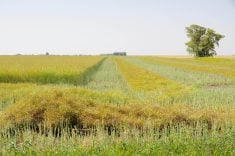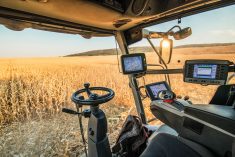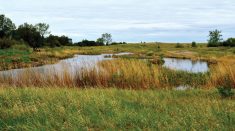Conducting your own field-based studies can show exactly how a specific agronomic practice will perform in a particular field
Farmers need to step up and get involved in a new era of research, and it needs to be on farm, field scale, farmer driven, and collaborative, says Ty Faechner, executive director of the Agricultural Research and Extension Council of Alberta.
“I don’t think traditional research will ever go away,” Faechner told attendees at the recent Precision Ag 2.0: the Next Generation conference in Calgary.
“We still need it and it needs to be strong. But, there needs to be more engagement of the farming community in research.”
Read Also

Mazergroup’s Bob Mazer dies
Mazergroup’s Bob Mazer, who helped grow his family’s company into a string of farm equipment dealerships and the main dealer for New Holland machinery in Saskatchewan and Manitoba, died July 6 from cancer.
On-farm research is good for individual producers and for agriculture as a whole, he said.
“On-farm research allows farmers to have control over what they are evaluating,” he said.
“This provides an opportunity for people to be empowered. I think it can help us grow our industry, and I think it can make us more competitive internationally.”
Faechner predicted there will be a paradigm shift with producers undertaking their own studies in order to maximize productivity. While they might share the results with neighbours or even at forums and industry events, the priority will be on individual queries and individual results.
It’s certainly a change from how farmers have historically viewed research. In the past, research conducted at research stations was the only kind of scientifically accurate work possible. The typical research model, in place since the 1920s, is for researchers to identify a uniform site, arrange treatments in small plots according to an experimental design, collect the data, and then analyze the variance in data from the different experimental designs, said Faechner.
Farmers have tools
However, today’s high-tech equipment all1ows individual farmers to rival researchers’ precise application rates and yield monitoring.
“There’s about 2,800 people who applied through a federal equipment grant back in 2006-07 to get GPS equipment on their machines,” said Faechner. “The government put something like $40 million into the program. We know people have the equipment. The next step is, what are they going to do with it?”
Such on-farm studies can be field sized — “design based” in research lingo — and that offers many benefits. Small-plot studies can be affected by border effects, strong inter-plot competition, lack of correct herbicide systems and non-representative growing conditions. But field-based studies show exactly how a specific agronomic practice will perform in a particular field. Research funders are increasingly interested in on-farm, field-scale research, he said
On-farm research may also be a matter of necessity, as traditional research continues to face increasing pressures.
“We have a shrinking pool of resources to work on crop production problems in Western Canada and, when you look at traditional research, it’s quite expensive compared to doing on-farm work,” said Faechner.
As well, “demographics would suggest that (the research community) is going to lose a lot of intellectual capital in the near future.”
While Faechner recommends all producers consider on-farm research, he said they should be collaborative projects.
“We want to encourage (farmers) to do research work on their own, but in a fashion that we can have our agronomists who work for business support them, so we can get some really good science,” he said.
“Partnerships are what it takes to make this work. Not everyone has all of the skills to make this happen. That’s the reality. You need to have a team approach to this. Most producers we work with are very interested, but they may not necessarily have the time or the energy to put towards the analysis.
“The potential for on-farm research is huge since farm co-operators offer equipment, land and motivation to become engaged. However, a method of scientifically recording and analyzing data from these fields has been missing, which is why collaboration with agronomists is so important.”


















